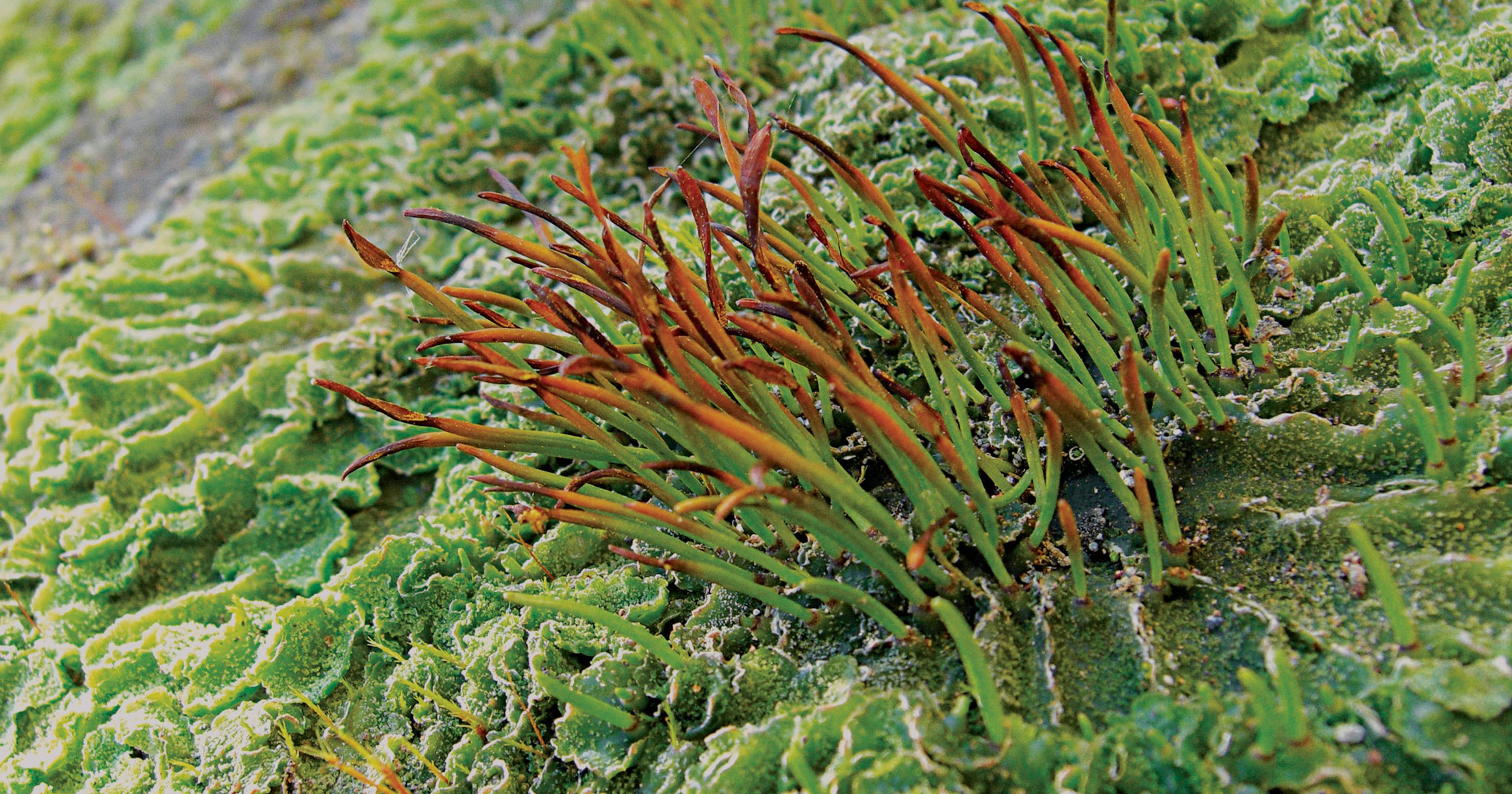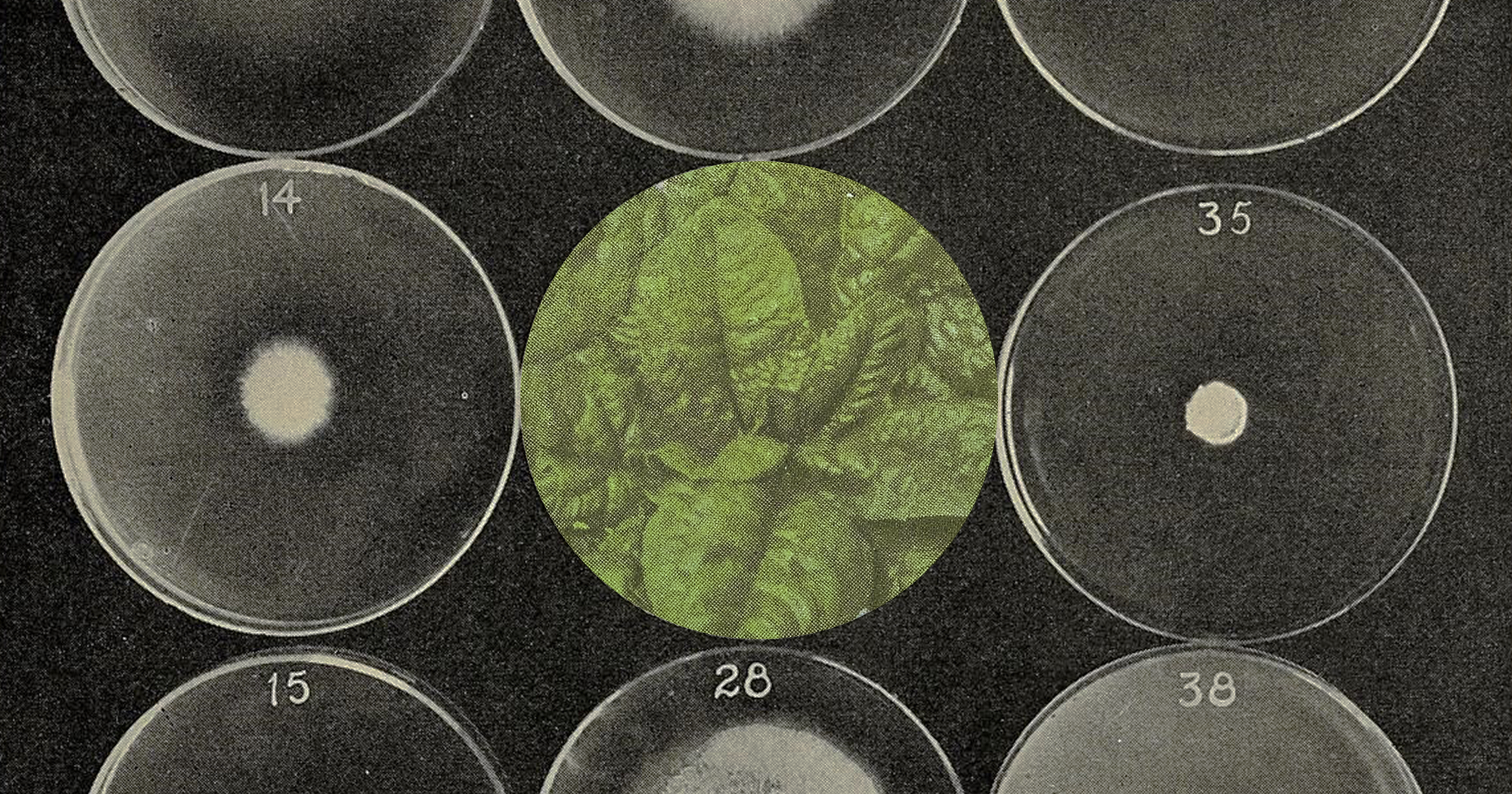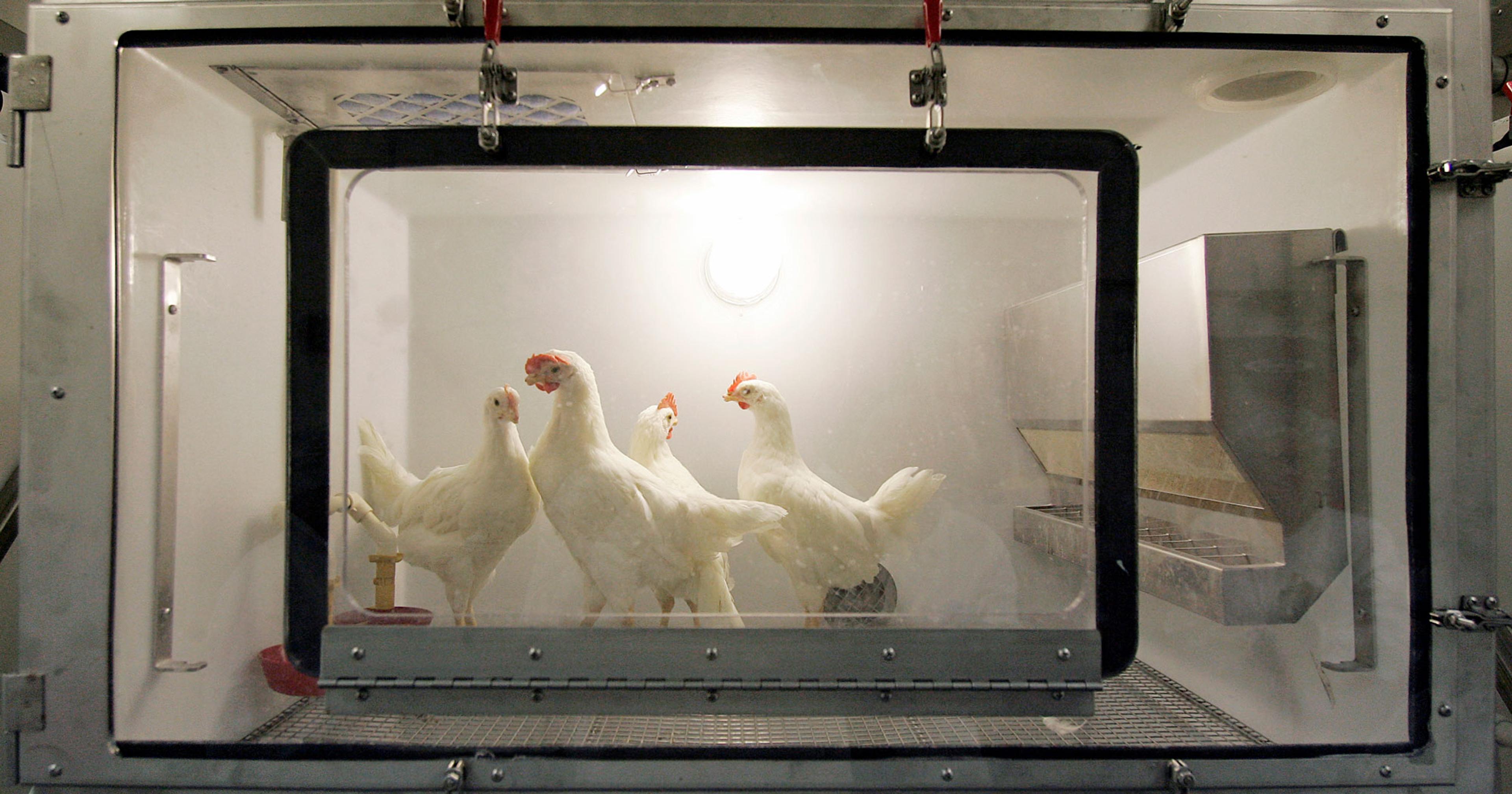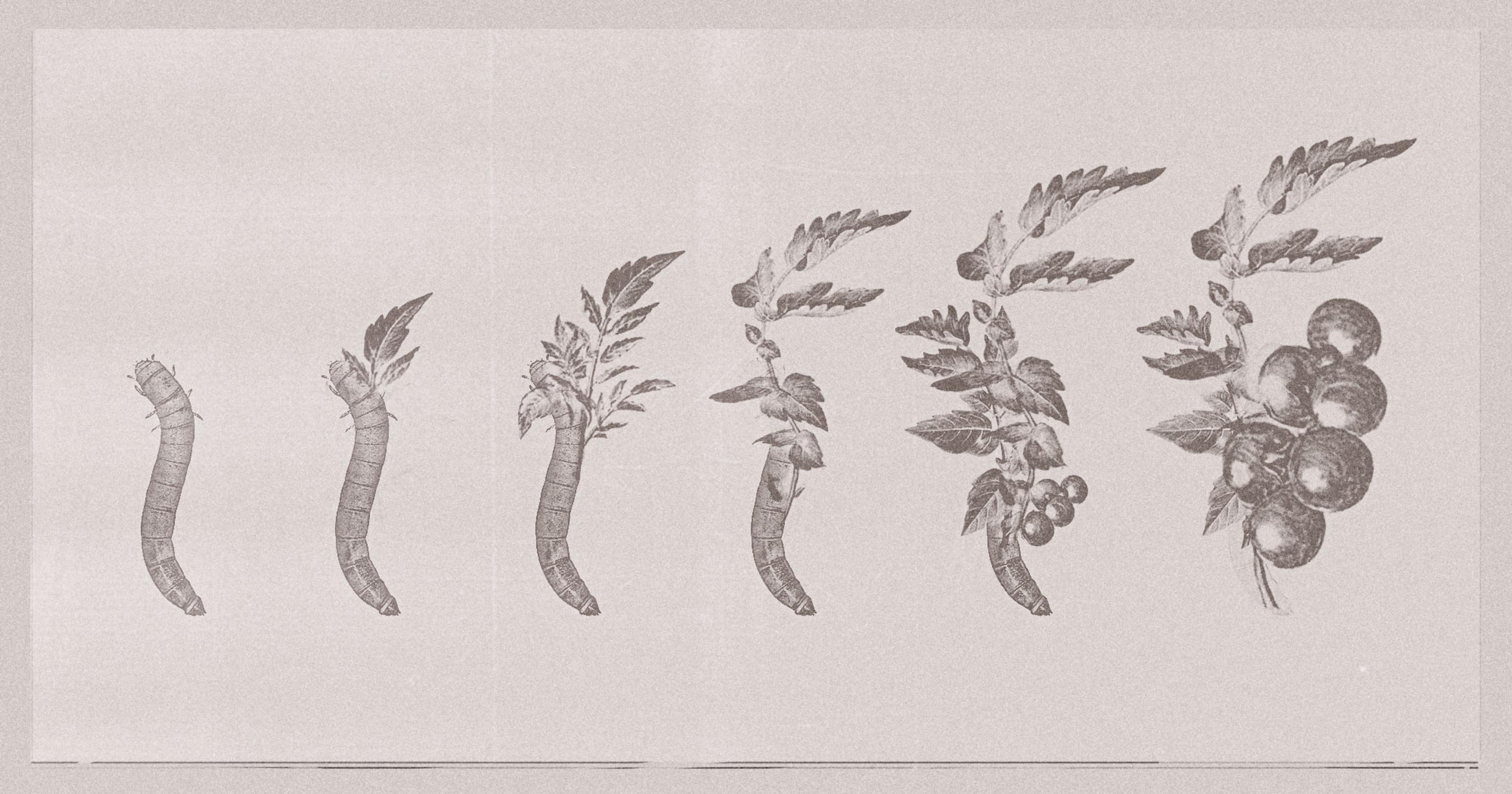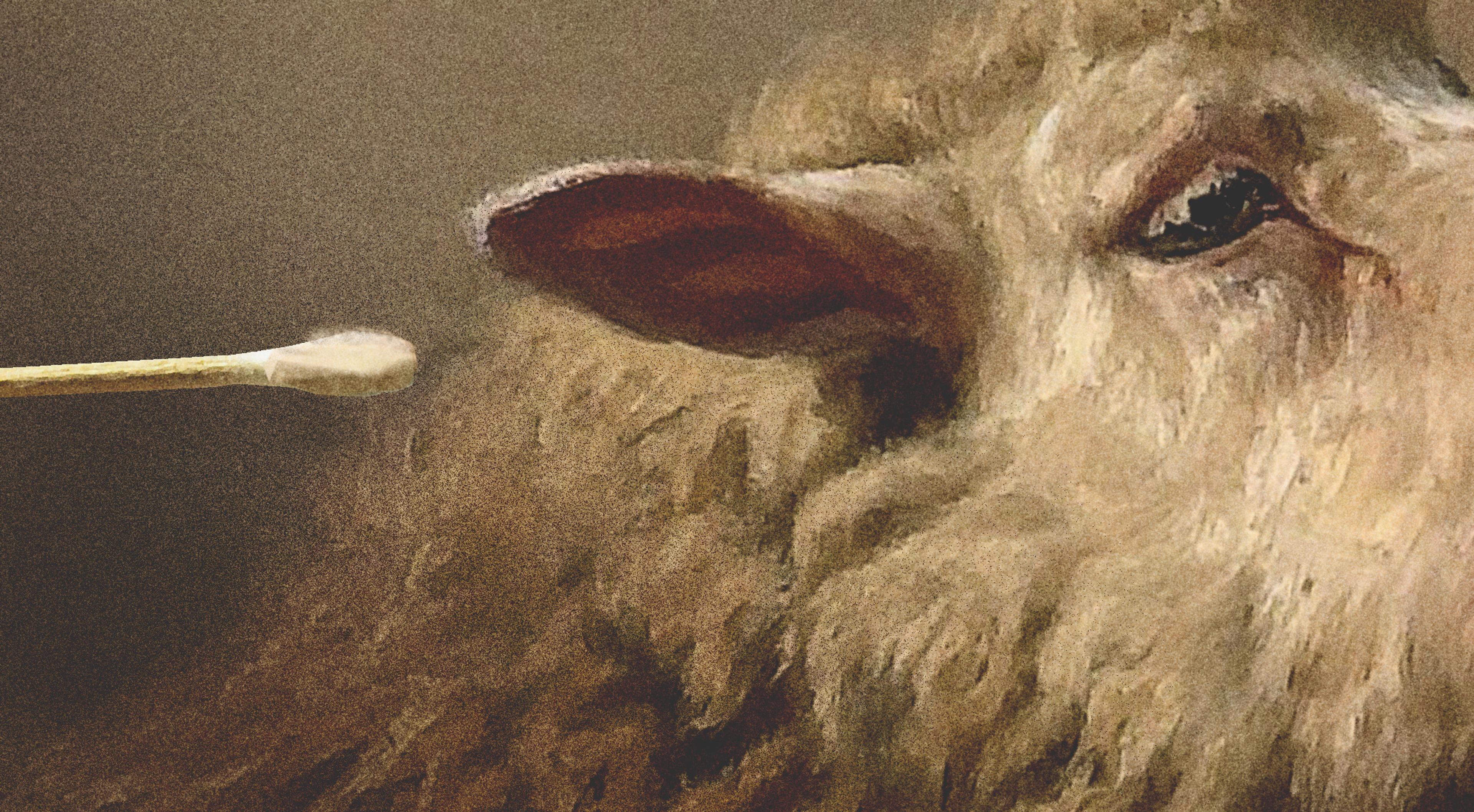Hornworts, an otherwise unremarkable bit of flora, has a unique photosynthesis booster. New research finds this booster has the potential to increase crop yields up to 50%.
The petri dish Dr. Fay-Wei Li pulls from a small, white refrigerator is filled with identical green sections of plant tissue. The plants are called hornworts, an often-overlooked species of small, nonvascular plants that have been around since the dawn of time. But despite their lengthy history on the planet, only recently have researchers identified their secret power.
Hornworts contains a CO₂ booster, unique within the plant world, that gives it the ability to more efficiently photosynthesize. This discovery could potentially have high rewards if the same CO₂-concentrating mechanism was installed in crop species. That is, it could boost photosynthesis between 30% and 50%, making it possible to increase crop yields without having to increase the amount of land or resources, according to Li, associate professor at the Boyce Thompson Institute (BTI) and an author of the study.
The research centers on Rubisco, one of the most abundant enzymes — proteins found in all living things that speed up chemical reactions — on Earth and the necessary ingredient for photosynthesis. Simply put: Rubisco captures CO₂ and converts it into sugar. The problem is that Rubisco isn’t as efficient as it should be. During photosynthesis, about 25% of the energy is lost during the process to correct for photorespiration. This is when Rubisco reacts with CO₂ to make sugars for the plant instead of reacting with oxygen like it’s supposed to, said Tanner Robison, a graduate student at BTI and first author of the paper recently published in Nature Plants.
This results in a waste of energy within the plant as it must correct its mistake.
“We wondered if we could find a way to get around this,” said Robison. “What if we could save that wasted energy? Like in theory, the energy lost during photosynthesis is now going into growth instead of correcting for this mistake.”
While the CO₂-concentrating mechanism is likely present in the common ancestor of all land plants — Charophyte algae, a type of freshwater green algae — hornworts is the only land plant to retain it. Further, hornworts have improved and refined this CO₂ booster over the course of millions of years of evolution. Based upon this discovery, researchers hope to eventually insert that CO₂-concentrating mechanism into crop species, boosting photosynthesis, and resulting in an increase in crop yields without the need for more land or resources.
Finding ways to regain that lost energy has been a problem other plant biologists have worked to solve over the years, though the majority of available modeling is constructed around Chlamydomonas, a type of green algae in the same plant kingdom as Charophyte.
“While there’s a huge amount of progress that’s been made,” acknowledged Li, “one of the key problems in using Chlamydomonas [is that] you’re trying to put something from algae into a flowering plant — and that’s a pretty big jump” because algae is water-based.
“In theory, the energy lost during photosynthesis is now going into growth instead of correcting for this mistake.”
“That’s the selling point here,” noted Robison. “There are aspects to the algae that haven’t worked in terms of trying to improve crops.”
Unlike algae, hornworts have more in common structurally and functionally with U.S. farm staples like corn, making this discovery — though not yet applied on-the-field — a potential game-changer for crop farmers.
“The advances that we’ve made in the field have been pretty significant over the last five years,” said Robinson. “Ten years ago, people thought we were a long way out from figuring out how to insert pyrenoids into plants, but we kind of do it regularly now. So, it’s just about finding how all of the various parts come together. And we’re reasonably close to that.”
James Schnable, a professor at the University of Nebraska with an expertise in plant breeding and genetics, agreed with the researchers’ assessment of Rubisco’s inefficiency and noted that hornworts “appears to be simpler than the approach corn and sugar cane use.”
“That suggests that, as we understand the hornworts method better, it may eventually be easier to engineer it into crops that currently lack a method to concentrate carbon dioxide (like rice, wheat or soybeans) than the current efforts to make C4 rice, which is still estimated to be decades away from success,” said Schnable.
Allen Williams, a sixth-generation farmer and former professor at Louisiana Tech University and Mississippi State University, said that the research definitely “has potential.” For farmers interested in boosting crop yields more efficiently, if available, hornworts “could be added to the farmer’s toolbox.”
“As we understand the hornworts method better, it may eventually be easier to engineer it into crops that currently lack a method to concentrate carbon dioxide.”
Yet, the concept will take a while to get to fruition. The current research is lab-based only and field tests are still on the horizon. Further, field tests would likely span multiple years to incorporate different seasons and locations.
When asked about the feasibility of applying the hornworts research to U.S. farming, Schnable said, “I could imagine this sort of research eventually being deployed in crops across the USA, which currently lack carbon concentrating mechanisms, but likely on a timescale of decades, not years.”
While this research is still ongoing, in another study, Li and his team previously discovered other hidden hornwort qualities that could be beneficial to farming. The most interesting one may be hornworts’ ability to source its own nitrogen through a symbiotic relationship with cyanobacteria. If the same thing could be applied to farm crops, it would result in the use of less nitrogen fertilizer.
“What if a plant could self-fertilize itself?” asked Li. “That would be the holy grail in plant science and agricultural research.”
Based on the discoveries of this remarkable plant, and despite its evocative name, hornworts could be a hidden asset for the future of agricultural production.

